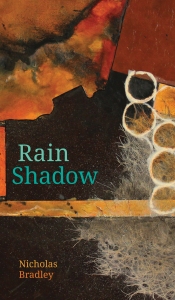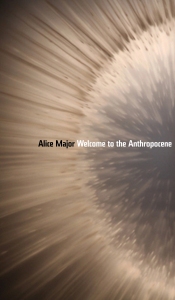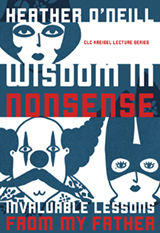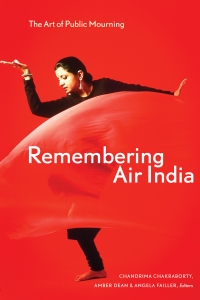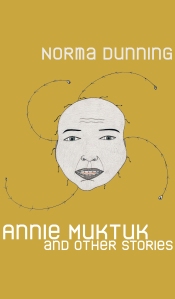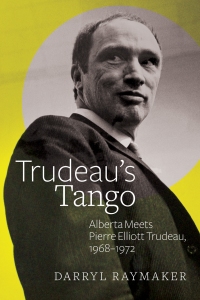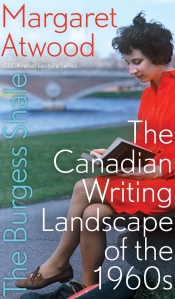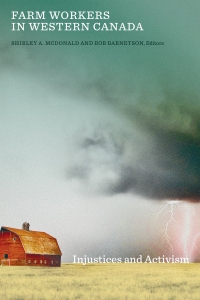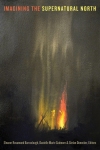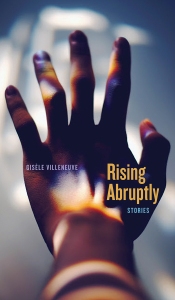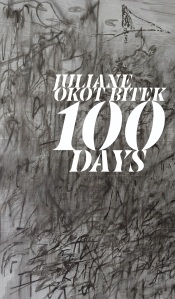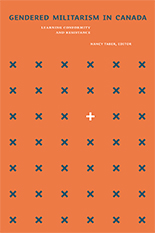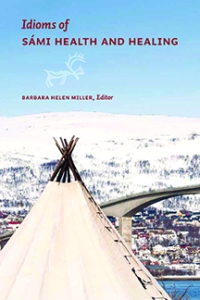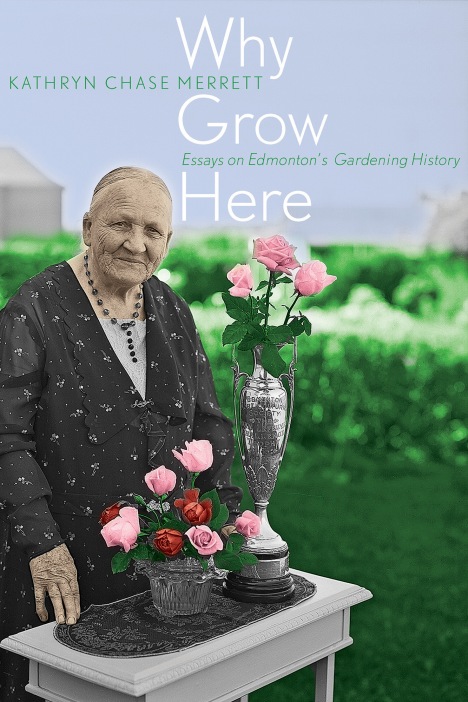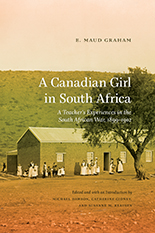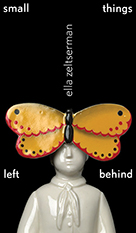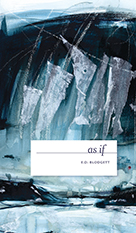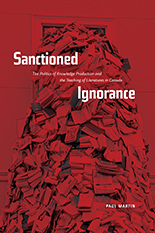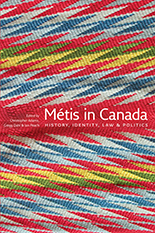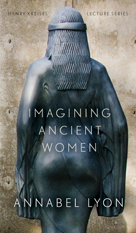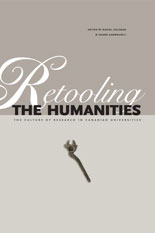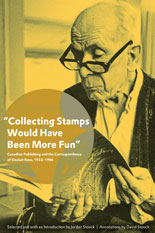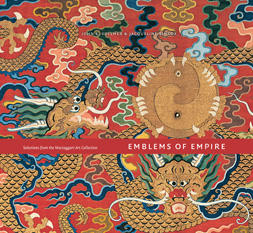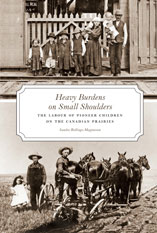When Edmonton Was Young book launch
June 25, 2009 at Audrey’s Books in Edmonton
 We were so delighted by Tony’s talk in celebration of his newest collection of Edmonton stories we thought we would post the text of his talk. Pioneering publisher and exemplary Edmontonian, W. Clarence Richards is a fitting star on this occasion:
We were so delighted by Tony’s talk in celebration of his newest collection of Edmonton stories we thought we would post the text of his talk. Pioneering publisher and exemplary Edmontonian, W. Clarence Richards is a fitting star on this occasion:
INTRODUCTION:
Friends, Cathie is very kind.
Of course they’re all kind at U of A Press…a great bunch to be with….
And they have a style…a style we recognize in another fine Alberta institution.
We can say it’s the CKUA of publishing houses
I’d like to move a round of applause for U of A Press and the kind people who work there.
HELEN: I second the motion
My granddaughter Helen seconds the motion. All in favour?
Friends, they’re a bright bunch at U of A Press, but I doubt that any of them could read…when The Edmonton Story came out…in 1956.
Many things have changed in 53 years, but not everything.
The Edmonton Story—and When Edmonton Was Young—came out of the same typewriter.
It’s funny about typewriters. They’re funny.
A young neighbour was in to visit recently. Tyler is an interior designer. He works with computer screens, creating patterns and moving them about.
When Tyler saw the typewriter he almost lost his composure.
We’ve mentioned CKUA. Sounds of the typewriter have been featured in a series now running on Sunday afternoons. The series is a history of Folkway Records, presented by Professor Michael Asch, who came from New York to teach anthropology at the University of Alberta. His father, Moe Asch, founded Folkway. Most records are music but there are other sounds. My daughter-in-law Laurel has volunteered to read what the Professor said about that:
 LAUREL: Dad’s objective was to give a VOICE to those things that would otherwise remain voiceless—like manual typewriters. Future generations will think they were used to kill people—by throwing them out of windows and knocking them on their heads.
LAUREL: Dad’s objective was to give a VOICE to those things that would otherwise remain voiceless—like manual typewriters. Future generations will think they were used to kill people—by throwing them out of windows and knocking them on their heads.
My weapon of mass destruction is an Underwood Standard. We know something of its history. The serial number reveals that it was built in 1924. And the pound key reveals that it was made in Canada rather than the United States. Not the pound key you’re thinking about—on your telephone—a playing field for X’s and O’s…It’s an ENGLISH pound. It’s been part of the furniture since 1935. We can only imagine where this admirable machine spent its first nine years of service. Perhaps it was in a wholesale house, typing letters that began:
Dear Sir: With regard to your esteemed favour of the 19th ultimo we beg to advise, etc etc.
 But I like to think it graduated from McDougall Commercial High School, where girls learned to type 65 words a minute and beat all the other girls in the world at basketball. I just happen to have…a picture here…taken at McDougall in the 1920s. It shows J. Percy Page, the young principal, with a group of students and teachers, borne up on two dozen typewriters.
But I like to think it graduated from McDougall Commercial High School, where girls learned to type 65 words a minute and beat all the other girls in the world at basketball. I just happen to have…a picture here…taken at McDougall in the 1920s. It shows J. Percy Page, the young principal, with a group of students and teachers, borne up on two dozen typewriters.
Helen, would you take it around so everyone can have a closer look.
The people are fuzzy but the typewriters are sharp and clear. You’ll see a few Remingtons but most are Underwood Standards. You could kill lots of people with that bunch, but you wouldn’t throw an Underwood very far. They weigh 30 pounds. We hear that the gorillas in the Calgary zoo are packing knives nowadays. Maybe they’d like some typewriters.
I like to think that my Underwood is in the picture…and Elsie Bennie may have practiced on it. Elsie Bennie won the provincial speed championship one year—126 words a minute. And she married another star performer—Eddie Shore, the hall-of-fame hockey player. I can’t prove it’s in the picture, but nobody can prove it isn’t…so we’re even.
We know for a fact that in 1935 my sainted mother bought it from Fred Jenkins, the Underwood agent—re-conditioned—for twelve dollars. And it still sounds a warning bell ten spaces before the end of a line.
What can we say about the typewriter? It’s habit-forming.
And what can we say about the BOOK?
Perhaps we can adapt what a member of Britain’s House of Lords said about every man. His Lordship said:
Every man is an omnibus in which his ancestors ride….
Well, if a man is omnibus in which his ancestors ride, then a city must be an omnibus in which its founders ride.
If our founders were to take a bus ride through downtown Edmonton this evening they would note some changes.
Half the buildings they knew have been knocked down for high rises. The other half have been knocked down for PARKING LOTS for high rises. But they’d be happy to recognize some significant survivors—like the building we’re in now.
Dr. MacLean’s Block has endured 100 years—to make a home for Audrey’s Books. May both enjoy another 100 years.
PEOPLE IN THE BOOK:
And what can we say about the riders on the bus? … the people in book?
Winston Churchill, that master of the language, believed in the smallest possible number of the shortest possible words. In the smallest possible number of the shortest possible words, they got it done. In recent years, the hockey world was stunned when 37 concerned Edmontonians put down a million dollars apiece to save the Oilers from becoming another export of Canadian natural resources to the United States. The hockey world couldn’t conceive of a team with 37 owners but the gallant 37 were just getting it done in the Edmonton tradition—improvising whatever would work, the way Swan Swansons got it done 101 years ago…to establish a lumber company which flourished for 60 years. Swan got it done by winning the most improbable race in the history of Alberta. In the fall of 1908 Swan was in the foothills near Edson seeking a stand of timber to provide ties for the railroad builders. He spotted a stand ideal for his purpose—but—a big operator spotted the same trees at the same time. Timber rights had to be claimed in Edmonton. The first man to the Dominion Land Office would win. The big operator had a smart buggy and two fast horses. Swan had only his two feet…and he won. If the race had been a year later Swan would have walked past this building in the first light of day, two blocks from the finish line. Read all about it.
And read how the mayor of the south side got it done. In the 1920s and ’30s Jimmy Smith (the taxi man) held the honorary position of MAYOR. That’s because he was perennial president of the South Side Businessmen’s Association…whose principal business was arranging fun and games for Old Strathcona. At a point where the treasury was at an epic low, Jimmy engineered a fund-raising scheme that continued to pay off for forty years after he left the scene. Jimmy Smith got it done by pulling a fast one on the lawyers. Read all about it!
And you can read how my grandfather got it done pulling a fast one on the warden. Gramp Cashman was not an inmate, in case you’re wondering. He was business manager of the federal penitentiary, where Commonwealth Stadium presides today. Gramp’s friend the chaplain, Father Normandeau, was building a mission church out at Beaumont. The outside of the church was finished but there wasn’t much inside…. Gramp and his friend the chaplain got an organ for the church by pulling a fast one on the warden. Read all about it!
MEL HURTIG, PUBLISHER:
Friends, the launch of any book born in Edmonton brings to mind two of our fellow citizens who got it done in the field of publishing, a field that can be a minefield. In the olden days, back in the 20th century, I had the privilege of working with both. On this happy occasion I’d like to recall Mel Hurtig and Clarence Richards.
The name Clarence Richards may not be familiar…he passed away in 1963…but don’t go away. He’s coming up later, as they say on television.
Mel Hurtig, I’m glad to say, is still with us…though his address is now Vancouver. We can call Mel the complete bookman…. He’s now in his third career with books. He sold books…he published books…he’s now writing his eighth book…titled The Future of Canada. As we know Mel is as passionate about Canada as Don Cherry, though from a more comprehensive perspective. And with Don Cherry you’re not always just sure what he’s talking about. But with Mel that’s never a problem.
Mel began his first career at 23. Having saved $500, he drew up a business plan, went to the bank and asked for $10,000 to open a bookstore. The banker said:
“Why would you open a bookstore? There are no bookstores.”
Interesting logic: We don’t need one because we haven’t got one. But the Canadian Imperial Bank of Commerce agreed to risk thirty-five hundred dollars—if Mel’s dad co-signed the note. Now the Hurtigs were in the fur business. Mel’s dad tended to agree with the banker. Department stores had book departments—why would you need a store?
But family honour was on the line. On the day the store opened he was there the whole time listening to the merry jingle of cash registers—$500 worth.
The bank’s money was safe…so was his. Mel’s store outgrew the first location, a second location, and then settled on Jasper Avenue, in a block now occupied entirely by the Standard Life Building. In Mel’s time it was occupied by eleven independent businesses in one-storey buildings. On one side of the bookstore was Melody Lane the record shop…on the other side, on the corner of 104th Street, the Carousel Café. The total package for a cultural expedition downtown. And the sun always shone on Jasper Avenue. One-storey buildings cast no shadow.
For several years Hurtig’s was the biggest bookstore in Canada, and like a true bookstore it was a club…for people who love books and the things that only books can give…like the one we’re in.
Mel’s office was unique. It was on a mezzanine at the back of the store—from which he could supervise all the pieces of the business, bestowing a smile on customers in the habit of paying for books, and a frown on those who looked like thieves.
One of Mel’s favourite customers was Joe Clarke. Joe was up from High River, beginning his career in public life on campus at the University of Alberta. He couldn’t afford to buy many books on the subject so he’d stand in the store and read them. And that was fine with Mel. Joe always put them back.
As time went on he was increasingly away from the store—on speaking engagements. He was becoming recognized across Canada as a spokesman for Canadian identity and people wanted to hear his message.
One day when he was in the store there was also an intense lady with a birdwatcher’s hat. She looked up, and with a voice like a trombone, called out: “Thank you, Mr. Hurtig, for making us free.” Around the store heads were turning. Mel was startled but unflappable and gracious. He gave her a reassuring smile and said: “You’re very welcome!”
After 17 years selling books Mel moved to his second career. As a publisher he put 200 titles in the marketplace and quickly became a NATIONAL publisher. He could get literary luminaries to participate in his causes. The Margaret Atwoods, Peter Newmans and Mordecai Richlers…which would have surprised his first banker, and the banker would have been even more surprised when Mel raised 12 million dollars for the biggest publishing project in Canadian history. The Canadian Encyclopedia was five years in the making. Three thousand individuals were involved directly. Another 2,000 indirectly—like the truckers delivering the biggest paper order in Canadian history. Mel made a lot of money on the Encyclopedia, and lost it on the JUNIOR Encyclopedia. But he has no regrets—the cause was worth it. In addition to the encyclopedias, he resurrected some thirty books about Canada—sourcebooks which had been out of print for years—and made them available in the marketplace.
If Don Cherry was with us tonight he’d be going like this: [Aggressive thumbs-up]
The ideas for almost all Hurtig books originated with Mel. He’d get an idea, identify a writer and present a clear concise concept.
Though he chummed around with literary luminaries he never lost the local touch. One of his best-sellers was a how-to book by the dean of pharmacy at the University of Alberta…and it wasn’t about medicine…but how to propose a toast to the bride. Mel had observed that most who attempted this ritual needed help. So he turned to Merv Huston. The dean was a born entertainer. He’d worked his way through college with a dance band called Happy Huston and His Merry Men. He was probably the most sought-after lunch and dinner speaker in town. A Toast to the Bride was a winner.
One day Mel asked me to come around and outlined his idea for An Illustrated History of Western Canada [holds up book]. Later, he had an idea for A Picture History of Alberta [holds up book]. In the immortal words of the lady with the birdwatcher’s hat: Thank you, Mr. Hurtig.
Well, after 19 years of publishing Mel moved on to his third career in books. I talked to him last week. It was raining in Vancouver, a good day for writing. He asked to be remembered to his old customers.
CLARENCE RICHARDS—PUBLISHER:
Now, about Clarence Richards.
I last spoke with Edmonton’s first publisher in 1963. He was back in his office after difficult surgery. But he was looking well, his energy was returning and he had plans for a promising manuscript someone had offered him. About ten days later I came home and picked up the Journal and saw his picture, and wondered what cause he had taken up this time, and read that he had died. Complications after surgery.
The Journal story covered his career as a teacher—33 years at Victoria High School—but there was little about the things he got done after four o’clock. After a day in the classroom he was ready to go to work on causes in the community. In the smallest possible number (of the shortest possible words)…. If he saw a need that somebody should be doing something about, HE did it. When he saw that Edmonton needed a publisher, he accepted the responsibility. We now have some ten publishing houses. The Institute of Applied Art will always be number one.
All year we enjoy happenings supported by the Edmonton Arts Council. The organization from which the Arts Council grew was founded by Clarence Richards. And if your way home tonight takes you across the High Level Bridge look down into the valley on the left and there’ll be a neon sign—Kinsmen Sports Centre. The Kinsmen Club was founded by Clarence Richards.
It was in the 1920s, when Clarence was also in his 20s. He read about a movement which had started in Hamilton, Ontario—a call to civic action for young men age 20 to 40. He thought Edmonton needed a club like that, and he got a charter—for Kinsmen Club Number 8. There are now 600 Kinsmen Clubs across Canada, and only in Canada, like Red Rose Tea. Clarence’s generation served the city in the hard times. When oil made the economy blossom a young generation went to work making a recreation centre of Walterdale. They were so successful, there was such an outpouring of demand for the facilities, that they soon had a one-ton rhinoceros by the tail. The Kinsmen Centre was growing totally beyond their resources. A grateful city took over and carried on the name.
While he was setting up the Kinsmen, Clarence took care of a need in his field of education—correspondence courses for kids where there were no high schools. The government mailed out lessons for elementary grades but couldn’t afford to go higher. So Clarence got teacher friends to write programs and sold them to eager buyers…who could then write the departmental exams. One became a Rhodes scholar. The customers were grateful but not the minister of education. He called Clarence a bootlegger.
Then he saw another need. Teachers (in both town and country) were short of course material. He turned to veteran colleagues to write programs and aids and sold them to another eager market—and the minister called him a communist. By the early 1930s he was paying so much to have this material printed he saw a need for his own print shop—which became The Institute of Applied Art. He needed some money from the bank and the bank needed security so he put up the household furniture as collateral. He decided he wouldn’t tell Mrs. Richards that the bed was included.
In this period of economic and psychological depression, when city employees were negotiating wage decreases, not increases, Clarence decided that Edmonton needed a football team. The Eskimos had lapsed with the failing health of legendary Deacon White. The town needed a team. Vigorous young fellows needed a team to play on. So he rounded up the remnants of three sets of contrasting uniforms and produced a team he called the Hi-Grads—like the COMMERCIAL Grads of basketball.
Clarence was coach, trainer and equipment manager, and would have been treasurer if there was any money. The only player he ever kicked off the team was a halfback who wouldn’t buy bootlaces to replace the ones he’d broken.
When the Hi-Grads charged on the field to meet the Calgary Ponies, or the U. of A. Golden Bears they were a symbol of Edmonton taking on the great depression—tattered but defiant.
When times improved the players were inherited by the Edmonton Athletic Club and then the Eskimos, and Clarence was off into something else for which he saw a need. This has evolved into the Edmonton Arts Council.
He got the process moving in 1944 persuading the city to set up a Recreation Commission—with resources to promote recreation in all its forms—including the arts. He believed strongly that recreation goes beyond physical activity. The commission evolved to the Parks and Recreation Advisory Board, and eventually to the Edmonton Arts Council, with 300 members, individuals and organizations, and three million dollars in grants to bestow every year. He was chairman of the Recreation Commission for seven years and then gave it up—being involved in another responsibility. He had come to the conclusion that Edmonton needed a publisher.
THE AWAKENING:
It was on account of Jim MacGregor. Jim had brought him a history of fur trade posts along the North Saskatchewan River—of which Fort Edmonton was the greatest. Jim MacGregor was a wonderful guy. He was an electrical engineer, and he’d gained a special rapport with Alberta as nature intended it through his work with the Calgary Power Company, the transmission giant of the day. Surveying routes for power lines took him to out-of-the-way places where historic sites lay undisturbed. There were fragments of trading posts along the river which had been the highway of the fur trade. On summer evenings after a workday he liked to poke around these sites imagining the life that went on there and at forts down to Hudson Bay.
Jim knew he had to write the story. Clarence knew someone had to publish it and he knew who that would be. And he knew he had a problem. The book was western history and majority opinion held that we didn’t have any. Events were too recent, in the memory of people still walking the streets. For example:
In the 1930s I was in Grandin School, a few blocks that way [gestures]. Our principal, Mother Antoinette McKinnon, was a great lady with a kind word for everyone…except Lewis Reel.
Mother Antoinette and her family were on a pioneer farm in Saskatchewan when the Northwest Rebellion broke. That event wasn’t history…it was a childhood trauma which she and the neighbours and the country could have done without…and it was all the fault of that bummer Lewis Reel.
We had CANADIAN history in school…Lord Durham and the family compact etc. which was presented like cod liver oil. “Come get your Canadian history…. It’s awful stuff but it’s good for you.” But there was no history around us.
That was the climate in 1935. By 1948 Clarence could feel climate change. He sensed that there was a place for Blankets and Beads, and, more important, there was a market for it.
He had his own print shop at the Institute of Applied Art. He gambled and won. Blankets and Beads was received so well that Jim MacGregor followed up with two more books from his travels in Alberta: The Land of Twelve-Foot Davis—that’s the Peace River Country—and Behold The Shining Mountains, the journey of Anthony Henday.
A realization that Alberta was approaching 50 years as a province brought a steady warming trend. By 1953, so warm that the Alberta Historical Society came to life. Though it was established in 1907 by an Act of the legislature it remained dormant till 1953 when the first edition of Alberta Historical Review appeared. The 227th edition (of Alberta History) has just arrived.
Edmonton was approaching 50 years as a city. In 1954 there was an historical pageant at the Gardens—Who Builds A City—written by Elsie Park Gowan.
The next year was number 50 for the province. Jubilee Auditoriums were going up in Edmonton and Calgary. Government House was to be restored for state occasions and the grounds would be the site of a provincial museum and archives. It was a heat wave. Then Canada came up to one hundred years as a country and this set in motion hundreds of community histories.
Our city started Fort Edmonton Park, a museum of life-size re-creations of historic buildings—a work still in. Now the climate has become positively tropical.
Volunteer enthusiasts have given us the Aviation Museum on Kingsway, the Railway Museum at Belmont, the Edmonton Radial Railway Society has put streetcars back on the High Level Bridge.
And Edmonton Archives has moved into the Prince of Wales Armouries… where the Armoury preserves the Archives and the Archives preserve the Armoury. A perfect storm.
HOW I GOT A RIDE ON THE HISTORY BUS:
A perfect storm…an appropriate symbol for climate change in the way we’ve perceived our history. You can tell the story in terms of climate change…or, if it’s all right with Helen, tell it in terms of a BUS…a bus which didn’t move for fifty years… but when it got moving it went faster and faster…till it’s belting down the freeway with police cruisers wailing in pursuit. How’s that, Helen?
HELEN: That’s much better.
In 1950 radio was the 900-pound gorilla in the media market. Television was years off. Edmonton had two commercial radio stations—CFRN and CJCA. CFCW was coming on but it was in Camrose, CW standing for Camrose and Wetaskiwin. Later on they discovered, with whoops of joy, that CW also stands for Country and Western.
I was in the newsroom at CJCA—writing newscasts, and covering city hall, the police, the courts and civic events. The morning news led off with whether the trains were on time—and there were no traffic reports. The Walterdale Bridge was closed for 18 months for re-decking and nobody noticed.
At night the big newscast came at ten o’clock. On a night that will live in serendipity a story came on the wire about nine beavers. They’d been chewing on gardens up Edmonton’s west end. Neighbours had complained. Wildlife officials had scooped them up and carted them off to the Athabasca River. A thought came. You never know where thoughts come from. The thought said: that was a shabby way to treat the industrious animal on which Edmonton’s economy was founded. So I phoned some knowledgeable people and wrote the incident into a story of injustice—which worked up to a thunderous conclusion. Our daughter-in-law Laurel is good at thunderous conclusions. Laurel has graciously volunteered to do this one. As we used to say in radio, take it away, Laurel.
LAUREL: Founded by the beaver, Edmonton’s economy grew. The Scots of the Hudson’s Bay Company organized it. In the 1860s the discovery of gold on the river broadened it. Agriculture stabilized it. Immigration expanded it. The CPR accelerated it. The CNR buttressed it. Industry balanced it. Oil guaranteed it and Social Credit cleansed it. But the beaver started it. If the nine displaced beavers—living in exile in Athabasca—are a trifle huffed at being strong-armed out of Edmonton, they have every right to be.
THAT’S MY DAUGHTER-IN-LAW.
We ended the show with the beaver story. We tried to leave the listeners with something upbeat or offbeat—but this ending was so well-received it was the beginning—of a sequence of events which has led to this occasion in Sharon and Steve’s Bookstore.
To start…bits and pieces of “times past” found a regular spot – on Sunday nights. Local news was scarce on Sundays – sometimes there wasn’t any…but we could project some Edmonton flavor at the end with stories of the kind Gramp Cashman and his friends used to tell (and laughed every time they told or heard them)—but weren’t being written down because history was no laughing matter.
The tales found an audience, and as Christmas approached in 1951 the bells started ringing early. They found a sponsor. Gainer’s bought 13 10-minute shows called The Edmonton Story—to promote Gainer’s Superior Ham at Christmas—to tempt turkey-tired appetites. To tempt turkey-tired appetites. Try that ten times fast. When the first series finished there seemed to be material for another 13, and eventually there was enough for 723, as people came forward with stories, ideas and contacts.
The Edmonton Story stayed on the air ten years…introduced by the cry: A Superior Program From Gainer’s Limited. Anything with the Gainer’s label was trademarked Superior. At the first hockey game I ever saw, in the old Arena-Gardens, one of the teams was the Gainer’s Superiors. Gainer’s maintained a high profile in the community. It was the local independent, contending vigorously with Swift, Burns and Canada Packers.
Gainer’s did the most advertising and had a neon sign at the most visible location in town. When you drive down Jasper Avenue, headed east—when you come to 101st Street Jasper makes a bend to the left. Three blocks farther on it makes a sharp bend to the left. Gainer’s sign was on top of a three-storey building in the bend. So it appeared to be in the middle of the street. And if you didn’t notice it, the sign featured a neon dancing pig. You’ll have guessed correctly that the top man at Gainer’s enjoyed a laugh. The top man was Alex MacDonald.
We should explain the power of the MacDonalds—in the Edmonton of that time. When you’re next at the city archives count names in a 1950s phonebook. You’ll count more MacDonalds than Campbells…. But there are more MacDonalds than Smiths or Joneses—the demographics of the fur trade still prevailed. Alex liked the old stories because Gainer’s was part of them. The founder, John Gainer, arrived here in 1891, on the second train from the south. Thanks to Alex MacDonald A Superior Program from Gainer’s Limited was heard 723 times.
I hope that some day I’ll be invited to name a city park…in a prominent position on a busy street…too small for a building. There’ll be a sign that says: Alex MacDonald Park. And there’ll be a bench—with a brass plate that says: Have A Superior Day!
People will wonder about this mysterious message. What is its secret meaning? They’ll decide it must be a wise saying…by a holy man…who lives on top of a mountain…in Tibet.
It will catch on. When the cashier at Safeway hands you your receipt she’ll say: Have A Superior Day. And off in the great beyond the man who sponsored the Edmonton Story will have a superior laugh.
CLARENCE RICHARDS AGAIN:
Now, out in Radioland, there were doubts about these cheerful tales. Assuming they were old enough—and true enough—to be history—could they be history if they weren’t like cod liver oil?
Early on we got a vote of confidence from the Provincial Library. The Library (under the dome of the Legislature) was acting as custodian of archival material until the day when Alberta would have an official Provincial Archives. One of the Library staff—Edith Hilton—decided they were history. She phoned and asked for copies. So another sheet of carbon paper went into the typewriter…top carbon for Alex MacDonald…second carbon, somewhat smudged, went to the Provincial Library, Attention Edith Hilton—a very perceptive lady.
The ultimate vote of confidence came from Clarence Richards—in the role he’d assumed as a civic duty—the role of publisher. Clarence thought they were history, even if—in his words—he “got a bang out of them”. There you have Richards’ Law: If you get a bang out of something it can still be history.
The prospect of seeing (between hard covers) thousands of words which had floated away into Radioland was, well, intriguing. There was also the intriguing prospect of watching Clarence Richards in action, to observe how the man who’d got it done with education, the arts and the Hi-Grads got it done publishing western history. He had a monopoly in the field—a field in which no one else cared to tread. Banks and government had no presence in the enterprise. He was financing the current book with profits from the previous one—a method only for the brave.
The Institute of Applied Art was around the corner on 109th Street, in a building so narrow it seemed taller than one storey with a print shop in the basement. The Institute office was on the upper level. Other rooms were rented out to music teachers so it was a centre for the performing as well as the applied arts. All day long there was the sound of music—from the sound of a child torturing a violin, on up. Clarence would arrive in late afternoon, after a full day teaching at Victoria High School, ready to plunge into details of the Institute. He couldn’t always plunge right in. People would be waiting to see him about some community project. Down below, the print shop brought memories of the Hi-Grads and the halfback who was kicked off the team because he wouldn’t buy bootlaces.
The Edmonton Story was set on an ancient letter press—one letter at a time—and progress occurred only two days a week. Clarence had discovered a wonderful retired printer named Bill Gimblett, who was allowed to work two days a week without loss to his pension. Bill knew a lot of history from personal experience. He’d come west fifty years before to set type for Frank Oliver’s Edmonton Bulletin. If he disagreed with a writer, progress would stop while he voiced his objections. If he laughed at a story he’d stop and spin yarns from his own vast collection. Bill’s stories have become a chapter in this book—Chapter 5 actually—”The Printer’s Tale.”
Nowadays it takes a bunch of people to get a book to market. Clarence was a one-man show. He dealt personally with writers, delivered books personally to retailers and found creative talent in the community – like Gary LaRue, a display artist at Woodward’s who designed dust jackets. Here’s the cover for MORE EDMONTON STORIES, the downtown skyline of 1958. The highest point in the scene is the “infamous box” in which the Macdonald Hotel came. Clarence once offered my late wife Veva $20 to correct the spelling for the second edition of a book by a distinguished Albertan. We spent the $20 on a table for the television.
Then there was the Western Canadiana Book Club. He was the founder of course. He put a lot of energy into personal letters and personal calls asking people to join the club and support the cause of western history by committing to buy a copy of every book he put out. One on one…one at a time…that was the publishing business. One at a time…over fifteen years, he got eighteen or nineteen books into the marketplace…and into libraries—across Canada—where you still find them.
At our last meeting he was recovering from surgery—(so he and his doctors thought)…and he was drawing energy from a manuscript someone had offered. Then a few days later his picture was in the Journal…Clarence Richards 1895-1963.
Edmonton’s first publisher got it done in many causes, the hard way. It had to be the hard way because, in his time, there was no other way. And I don’t think he really minded. I think he enjoyed the challenge. It was an honour to work in one of his causes, and to tell his story tonight.
In conclusion…I’ve had a great ride…a great ride. Through half of one century and ten percent of the next. Friends that’s a lot of time. I’m grateful to God…for the time…and for the companionship of hundreds along the way who shared their stories, their insights and their enthusiasm.
You know, when you’ve been around since 1923 waking up every morning is a blessing…waking up in Edmonton…that’s a bonus.
Thanks for listening. Have a Superior day.
Filed under: Books, events, History, New Books, news | Tagged: Clarence Richards, edmonton history, Mel Hurtig, publishing in edmonton, Tony Cashman | Leave a comment »










